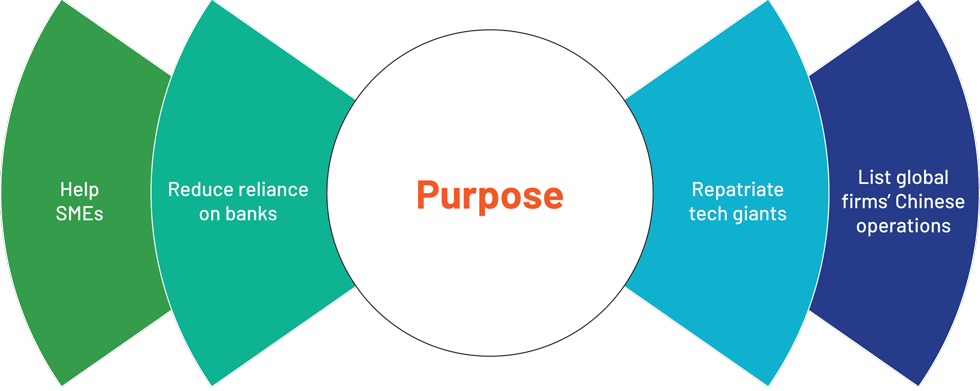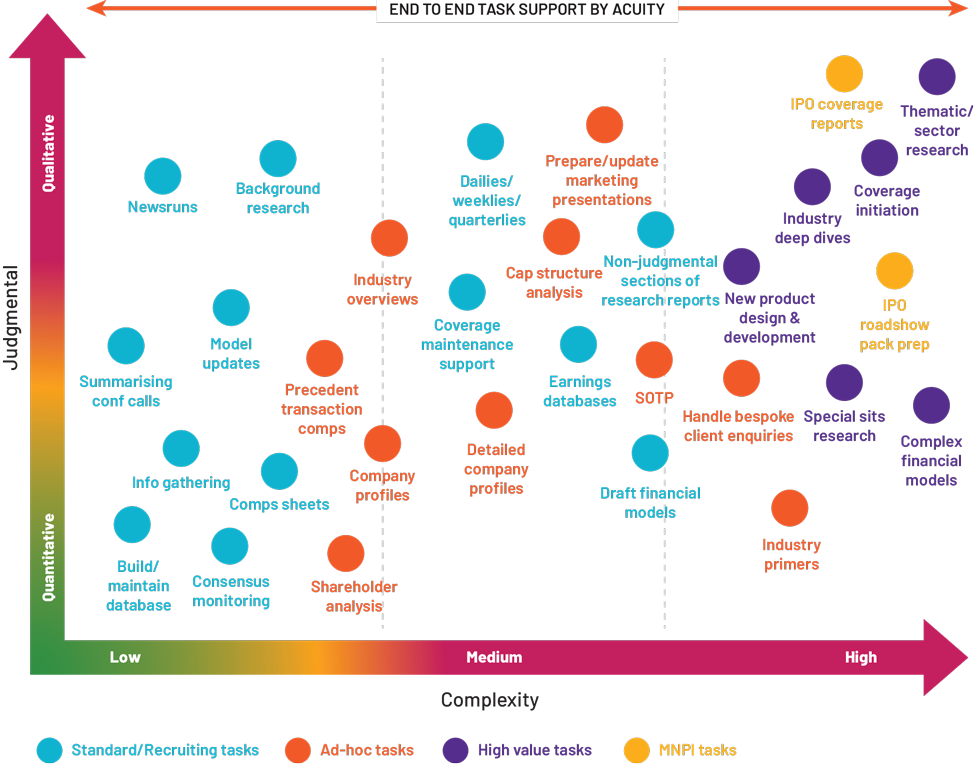Introduction
Executive summary
President Xi Jinping announced on 2 September 2021 that China planned to establish a new stock exchange in Beijing. China hopes the new exchange will support small and medium-size enterprises (SMEs) by providing them with a marketplace for capital. The Beijing Stock Exchange may also help bring home overseas-listed large technology companies that China is trying to rein in. While the investment community awaits the final regulations, the new exchange may open up a number of interesting investment opportunities, as the initial set of companies listing on the exchange will be from its over-the-counter (OTC) market.
More and more global fund managers are looking for investment opportunities in China because of the number of positives associated with the market. While they are excited about the fresh set of Chinese firms listing on the brand new stock exchange, international investors continue to face unique risks and challenges in China. Smart fund managers are increasingly partnering with reliable third-party research firms with a solid track record and established presence in the mainland to navigate the challenges this large market presents.
Introduction/Overview
Currently, there are two stock exchanges on the mainland – the Shanghai and Shenzhen exchanges. Although relatively new (they were established only in 1990), together, they make China’s stock market the second largest in the world, after the US’s. The Hong Kong Stock Exchange is also fairly integrated with China’s capital market, with companies from the mainland accounting for almost half of the companies listed on the Hong Kong Stock Exchange, making it part of China’s equity market.
In 2013, China inaugurated the National Equities Exchange and Quotation (NEEQ). The NEEQ is an OTC equity trading venue for Chinese SMEs not listed on either the Shanghai or Shenzhen Stock Exchanges. It is a de-facto exchange for Chinese startups. However, the NEEQ has so far struggled with liquidity, and most of the SMEs listed on this OTC exchange remain untraded.
Currently, there are 7,299 companies listed on the NEEQ, divided into three tiers: (1) select tier, (2) information tier and (3) base tier. Companies in the select tier are the largest and most credible, followed by those in the innovation and base tiers. The Beijing Stock Exchange will be established by including all 66 companies from the select tier of the NEEQ, which will be the sole owner of the exchange.

Key Challenges
The China market poses unique risks that global investors find difficult to navigate. A lack of meaningful research coverage from the sell side, language barriers, inadequate company disclosures and regulatory restrictions create challenges for global investors considering active participation in Chinese equities. However, these risks seem worth taking given the significant opportunities the China market presents.
Benefits
If international money managers are allowed to invest in companies listed on the Beijing Stock Exchange, it would open up a host of investment opportunities in entrepreneurial and innovative SMEs. The companies to be listed on the new exchange will be from diverse sectors, enabling global fund managers to benefit from their size and innovation-oriented growth. The new stock exchange also increases opportunities for international investment banks enhancing their Chinese operations. In October 2021, Goldman Sachs obtained the necessary approvals to take 100% ownership of its Chinese joint venture. It became the second international brokerage firm after JP Morgan to have acquired wholly foreign owned entity status.
Future outlook
While announcing that China plans to establish a new stock exchange in Beijing, President Xi Jinping clarified that it will mainly serve SMEs. These enterprises are crucial for China’s growth and are, unfortunately, under pressure due to the effects of the pandemic. Serving SMEs is not its only purpose, though. China wants to leverage its capital markets to lower its reliance on banks in an effort to control debt levels. It will also likely try to bring its large and unbridled technology companies back to the mainland. In addition, it aspires to attract large foreign companies to list their Chinese operations on the Beijing Stock Exchange.
Conclusion
The establishment of the Beijing Stock Exchange may lead to significant changes in China’s equity market, already the focus of attention of global investors. It could offer additional interesting investment opportunities for international money managers if they are allowed to invest in stocks to be traded on it. Global fund managers interested in investing in Chinese equities including stocks to be listed on the new exchange should explore partnering with third-party research firms with a solid record of helping buy-side client analysts gain exposure to the unique China market.
Acuity’s Value proposition
Acuity’s research analysts in Beijing have been providing research and analytics services to global asset managers. All the analysts are native Mandarin speakers and have a good grasp of the English language. Most of them have been educated in English-speaking countries and hold degrees in finance, economics, mathematics and management. Many have either completed certifications such as CFA and CPA or are actively pursuing them.
Our research analysts work closely with global fund managers, often located outside the mainland, as an extension of the client team. International fund managers benefit from our analysts’ presence on the ground and language capabilities. We conduct a number of research tasks for our clients such as local news analysis, creating and updating financial models, attending conferences held in Mandarin, sourcing useful data from Chinese databases such as WIND, translating policy documents, writing reports, conducting channel checks and reaching out to management teams of Chinese companies.





